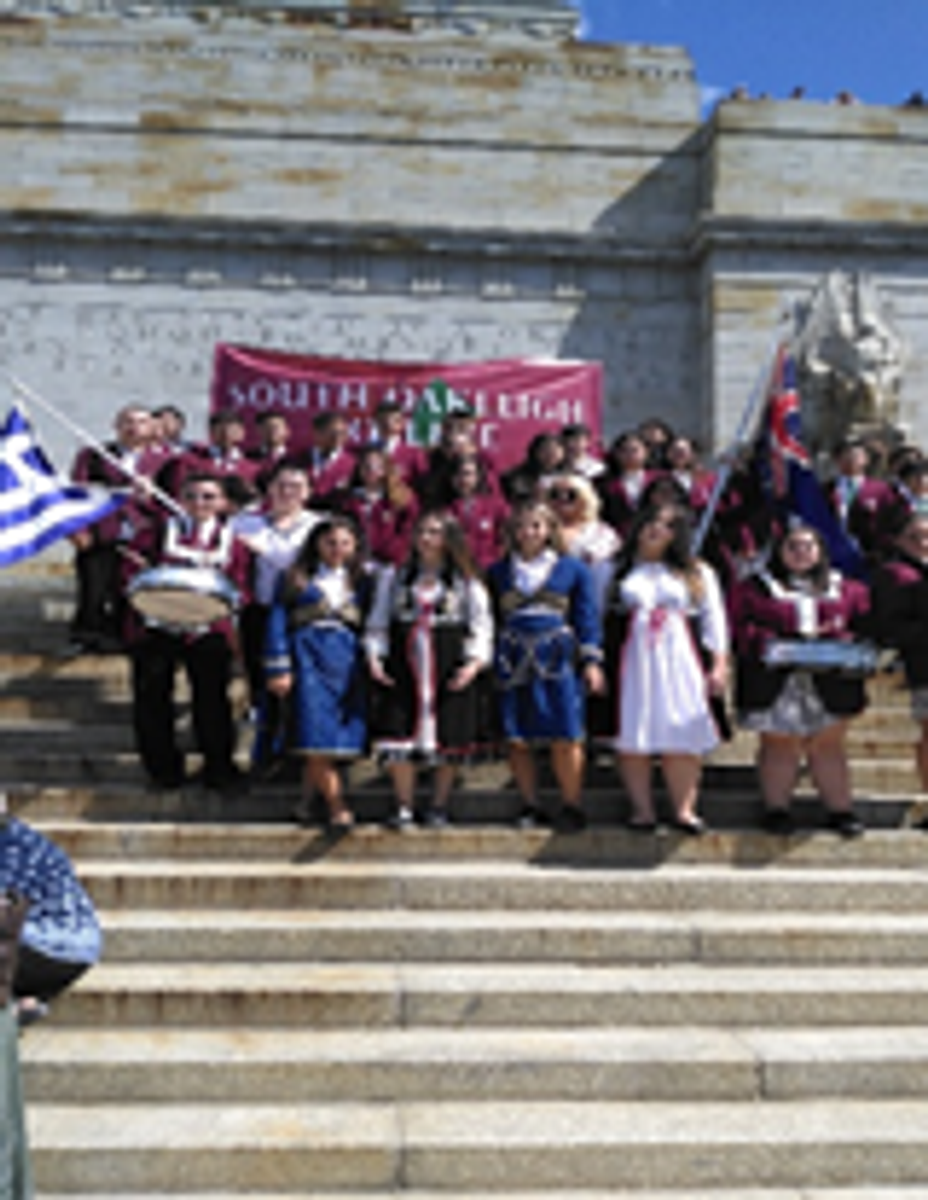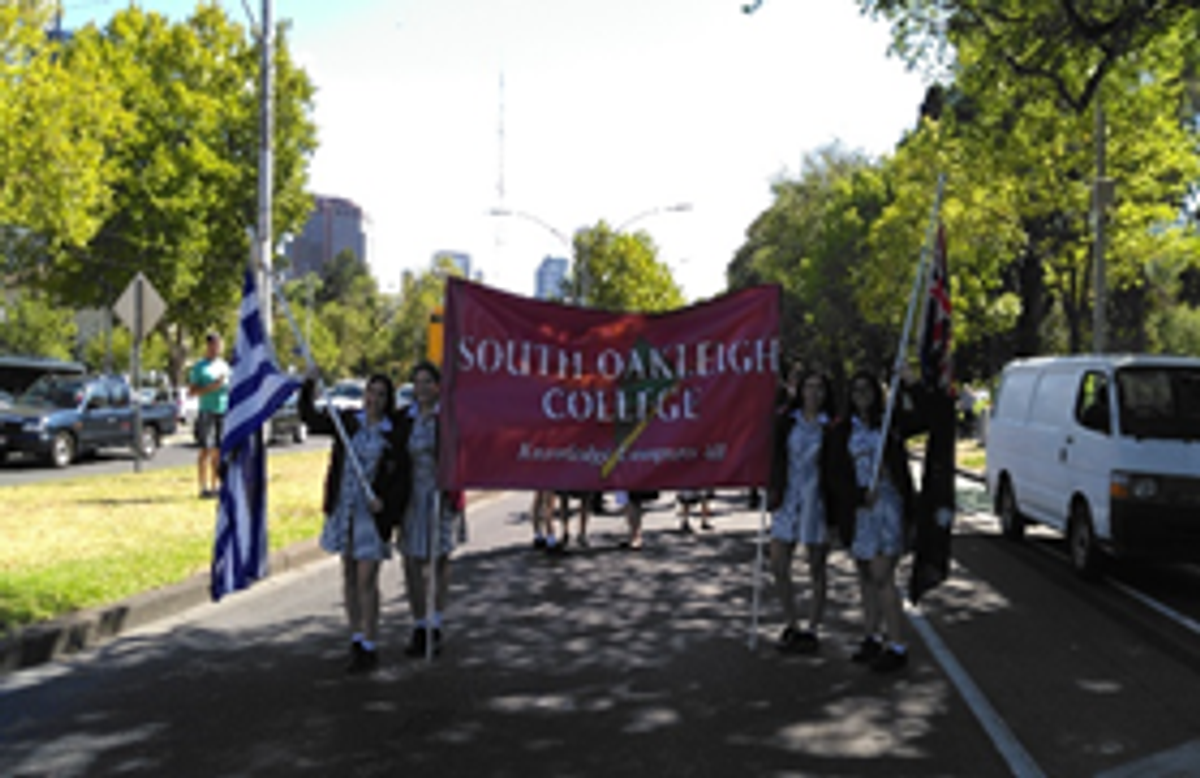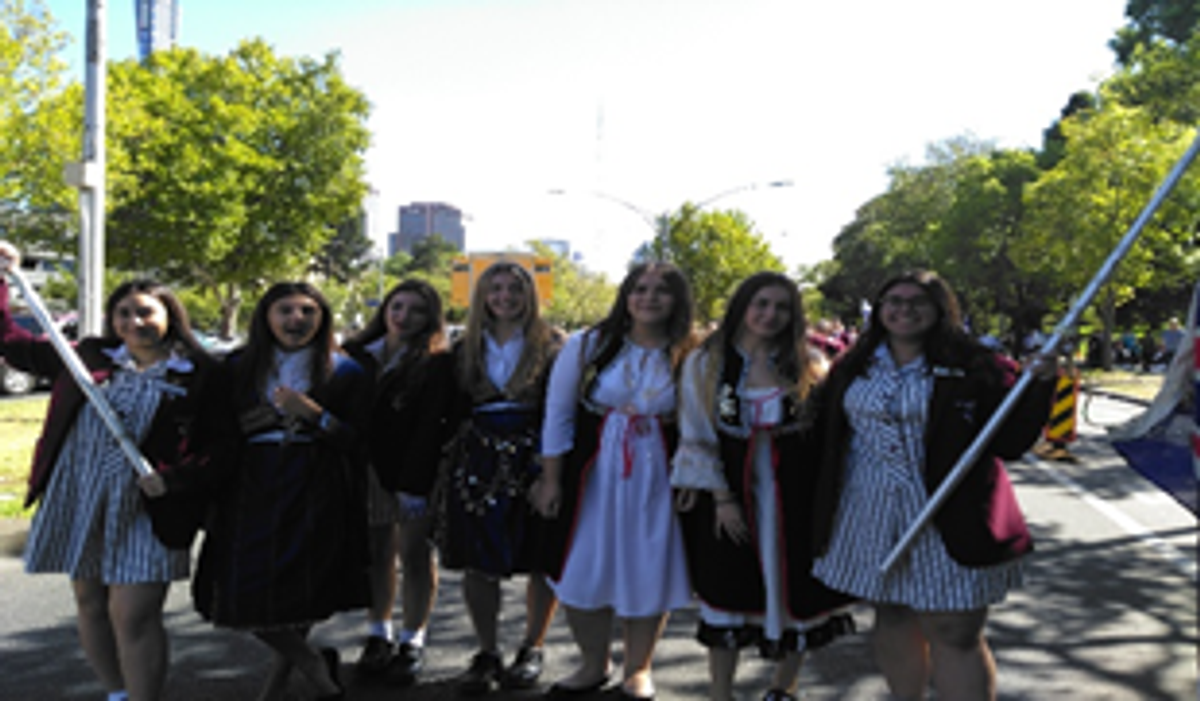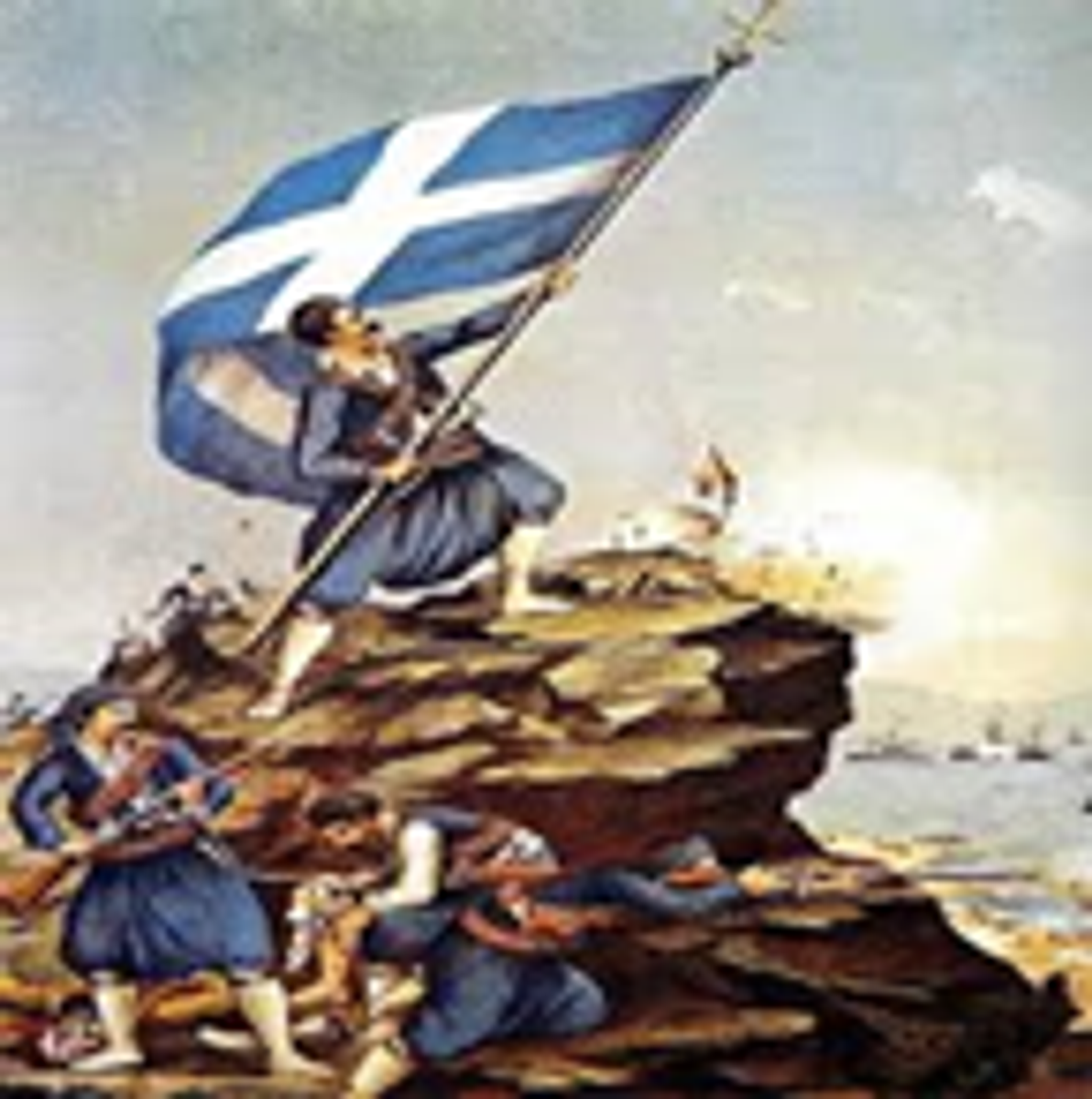LOTE

Greek
We welcome all students enrolled in Greek language and Culture and we also welcome Ms Efterpi Terzoudi and Ms Sirmo Kapoutsi, our Language assistants from Greece who provide support to our students. Term 1 was highly productive with students combining language learning with engaging activities.
Year 8 students enjoyed acting in short role-plays in Greek and practising their language skills in TV Studio recordings. Role-playing prepares learners for realistic communication by adding emotion, inventiveness, and listener awareness to language teaching. It also contextualises language use and exposes students to conversational routines and cultural discussions and provides immediate feedback regarding their language usage.
Marti Bracelet
The Marti bracelet or just Marti is an age-old custom for the beginning of spring. It dates back to ancient Greece and it known throughout the Balkans.
The name is derived from the Greek word for the month of March, “Martios”. From March 1 it is a tradition, especially for children, to wear a bracelet made of twisted white and red thread. The white symbolizes purity and the red stands for life and passion.
Children wear the bracelet for the entire month and remove it the last day of March. After taking off the bracelet, they hang it in a fruit tree, so the tree will remain healthy and give many fruits.
However, the custom varies in different areas in Greece. For example, in some regions you can remove the bracelet when you see a swallow returning for spring, so the bird can use the thread to build its nest.
The 1 March indicates the beginning of spring in Greece, and the hope for warm days and sun. Therefore, especially for young children, wearing the Marti bracelet means protection from the burning sun.
We wish you a very nice month of March Kalo Mina and a lot of sun!
Greek Dancing
The Zeibekiko, an old folk dance, was previously strictly for males. Due to the movements of the dancer, sometimes it is known as the ‘eagle dance’. The dance has no set steps, only certain figures and a circular movement. It takes place in an area of about one square metre and mostly consists of improvised movements.
Greek Independence Day
The march on Greek Independence Day is a national holiday in Greece, Cyprus and the Greek diaspora. It commemorates the Greek War of Independence against the Ottoman Empire (1821-1830) and the formation of an independent Greek state.
The rebellion originated with the activities of the Philiki Etaireia (“Friendly Brotherhood”), a patriotic Conspiracy founded in Odessa in 1814. By that time, the desire forindependence was common among Greeks of all classes, whose Hellenism, or sense of Greek nationality, had been fostered by the Greek Orthodox Church, the survival of the Greek Language, and the administrative arrangements of the Ottoman Empire. Their purpose was to overthrow the Ottoman rule in Greece and establish an independent Greek state. One of its leaders was the prominent Phanariote Prince Alexander Ypsilantis. The society initiated the Greek War of Independence in the spring of 1821.
The day, celebrated on 25 March, coincides with the Greek Orthodox Church’s celebration of the Annunciation to the Theotokos.
Our South Oakleigh College students marched with pride in front of the Shrine of Remembrance on Greek Independence Day.
Thank you to Nancy Bastakos and Phyllis Dimakakos for their contribution to all of our Greek events.
Ms Dimitra Maniatis
LOTE Head of Learning








